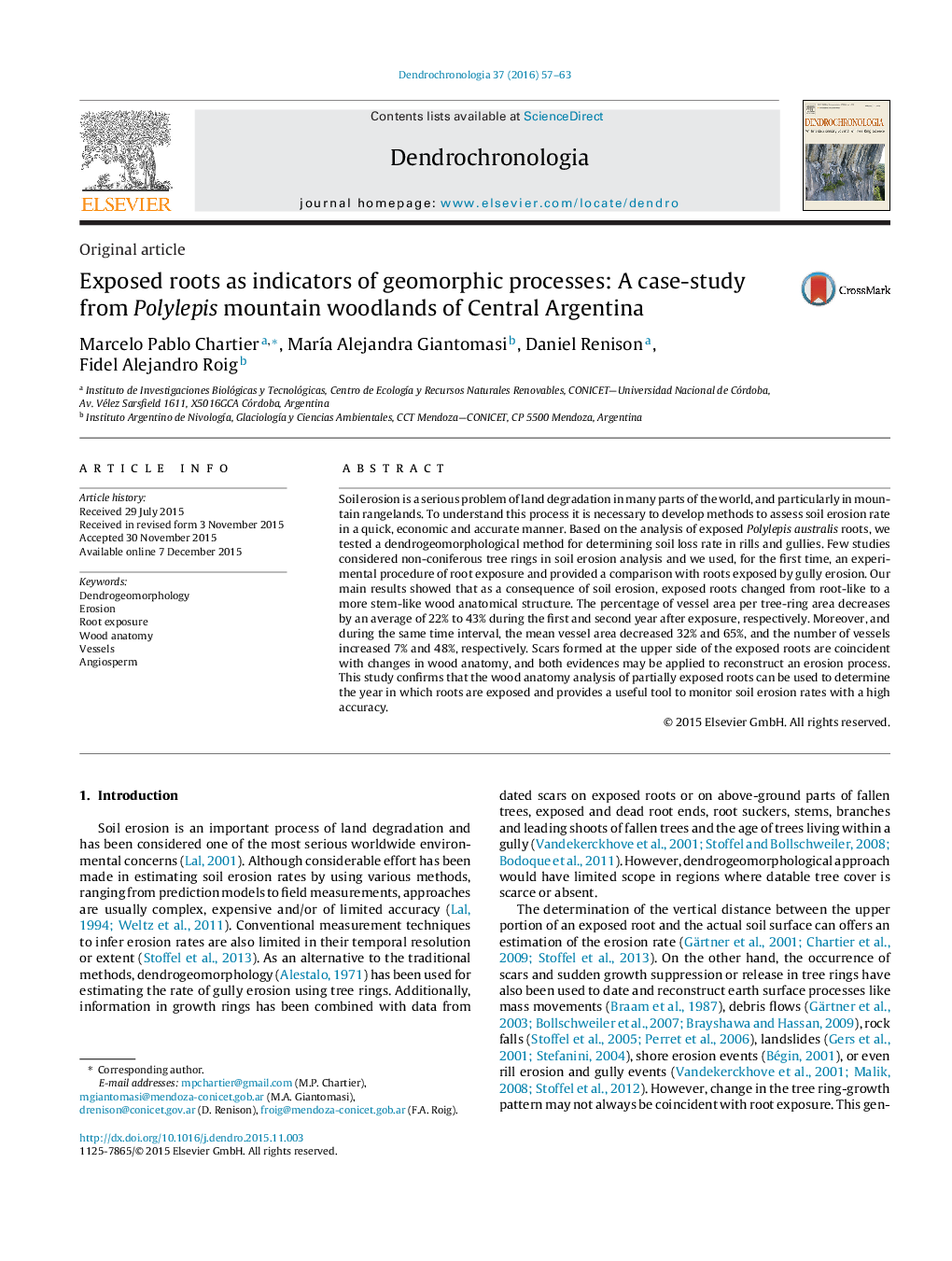| Article ID | Journal | Published Year | Pages | File Type |
|---|---|---|---|---|
| 85545 | Dendrochronologia | 2016 | 7 Pages |
•We detected the anatomical response of exposed roots to gully erosion events.•We used an experimental approach to test the methodological accuracy.•Scars on exposed roots are coincident with changes in wood anatomy.•Exposed root analysis can be used to determine gully erosion rates.•The described method is a reliable and powerful tool for geomorphologists.
Soil erosion is a serious problem of land degradation in many parts of the world, and particularly in mountain rangelands. To understand this process it is necessary to develop methods to assess soil erosion rate in a quick, economic and accurate manner. Based on the analysis of exposed Polylepis australis roots, we tested a dendrogeomorphological method for determining soil loss rate in rills and gullies. Few studies considered non-coniferous tree rings in soil erosion analysis and we used, for the first time, an experimental procedure of root exposure and provided a comparison with roots exposed by gully erosion. Our main results showed that as a consequence of soil erosion, exposed roots changed from root-like to a more stem-like wood anatomical structure. The percentage of vessel area per tree-ring area decreases by an average of 22% to 43% during the first and second year after exposure, respectively. Moreover, and during the same time interval, the mean vessel area decreased 32% and 65%, and the number of vessels increased 7% and 48%, respectively. Scars formed at the upper side of the exposed roots are coincident with changes in wood anatomy, and both evidences may be applied to reconstruct an erosion process. This study confirms that the wood anatomy analysis of partially exposed roots can be used to determine the year in which roots are exposed and provides a useful tool to monitor soil erosion rates with a high accuracy.
